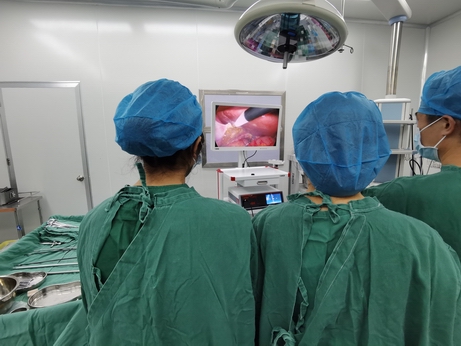Advancements in Laparoscopic Surgery: A Comprehensive Guide to Video Camera Systems
Laparoscopic surgery, also known as minimally invasive surgery, has revolutionized the field of surgery in recent years. Instead of large incisions, laparoscopic surgery involves small incisions through which a laparoscope, a long and thin instrument with a camera and light source, is inserted to visualize and operate on internal organs. The laparoscope provides high-quality images and videos of the surgical field, enabling surgeons to perform precise and safe procedures with minimal trauma to the patient.

The laparoscopic video camera system is a crucial component of laparoscopic surgery. It consists of a camera head, camera cable, and image processing unit. The camera head is attached to the laparoscope and captures high-definition images and videos of the surgical field. The camera cable transmits the video signals from the camera head to the image processing unit, which processes the signals and displays the images and videos on a monitor.
One of the main advantages of the laparoscopic video camera system is its high-quality imaging capabilities. The camera head can capture clear and detailed images of the surgical field, allowing surgeons to visualize the anatomy and pathology with precision. The high-definition videos provided by the system also enable surgeons to record the entire surgical procedure for future reference and educational purposes.
Another advantage of the laparoscopic video camera system is its versatility. The camera head can be attached to various types of laparoscopes, such as rigid or flexible scopes, depending on the surgical procedure and patient's anatomy. The system can also be used in combination with other laparoscopic instruments, such as graspers, scissors, and energy devices, to perform complex procedures with ease.
The laparoscopic video camera system has greatly improved the safety and efficacy of laparoscopic surgery. The high-quality imaging provided by the system enables surgeons to visualize and avoid vital structures and surrounding tissues during the procedure, minimizing the risk of complications and injuries. The system also enables surgeons to perform more precise and accurate procedures, resulting in better outcomes and faster recovery times for patients.
In conclusion, the laparoscopic video camera system is an essential component of modern laparoscopic surgery. Its high-quality imaging capabilities, versatility, and safety features have made it a valuable tool for surgeons around the world. With continued advancements in technology, the laparoscopic video camera system is expected to further improve the safety and efficacy of laparoscopic surgery in the future.



Leave a message